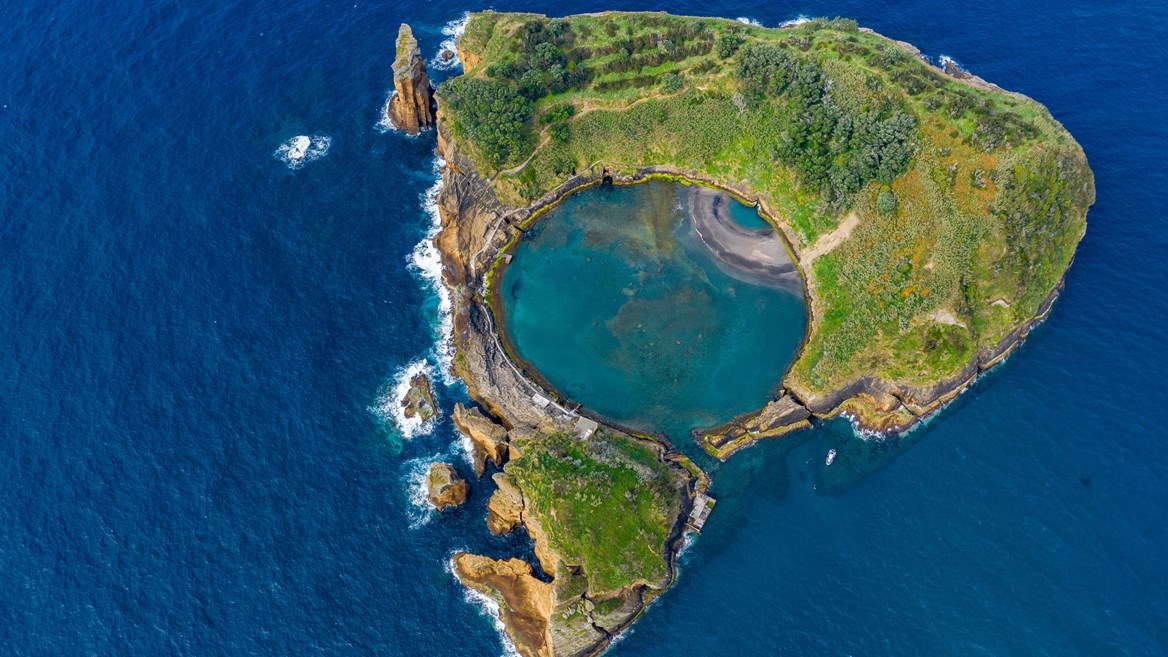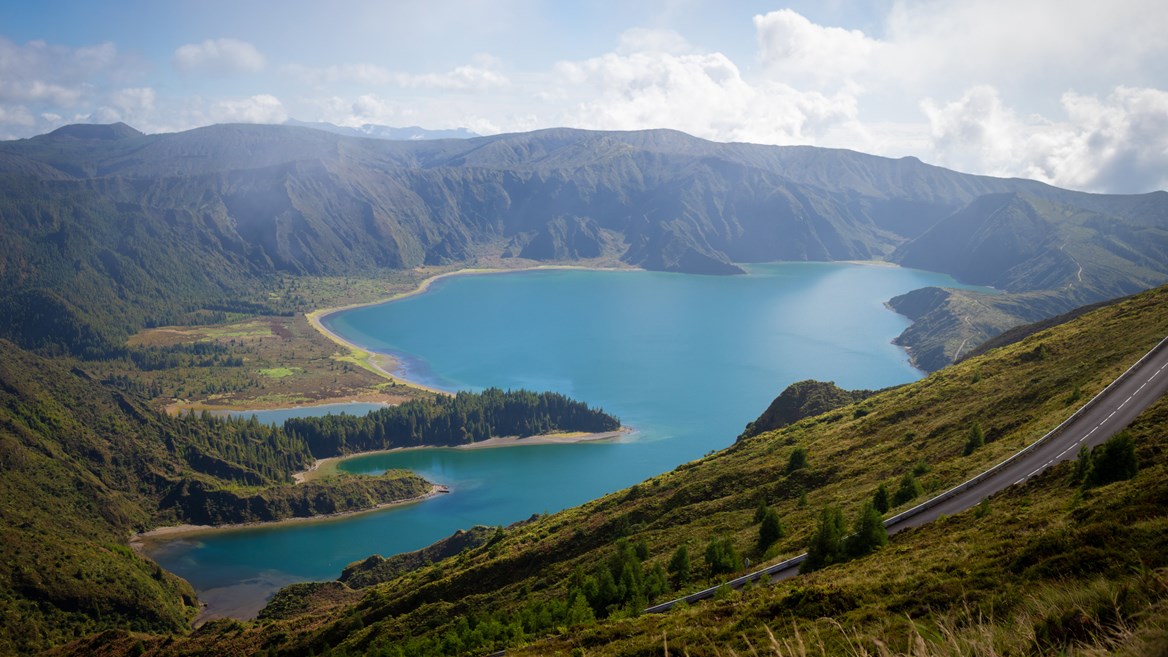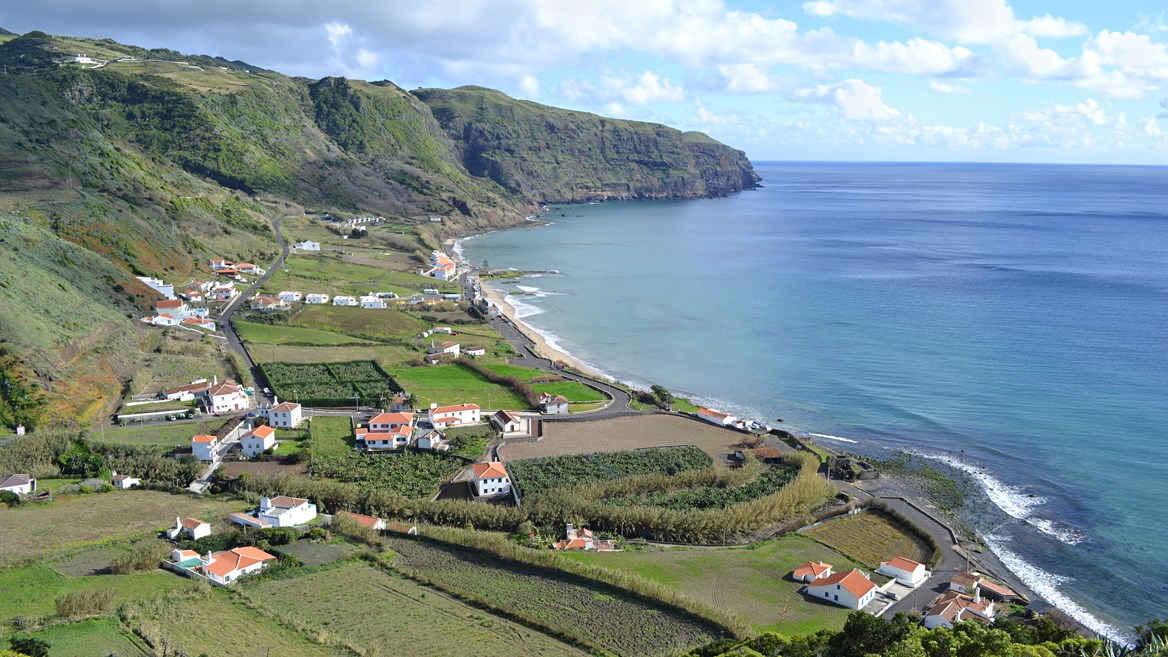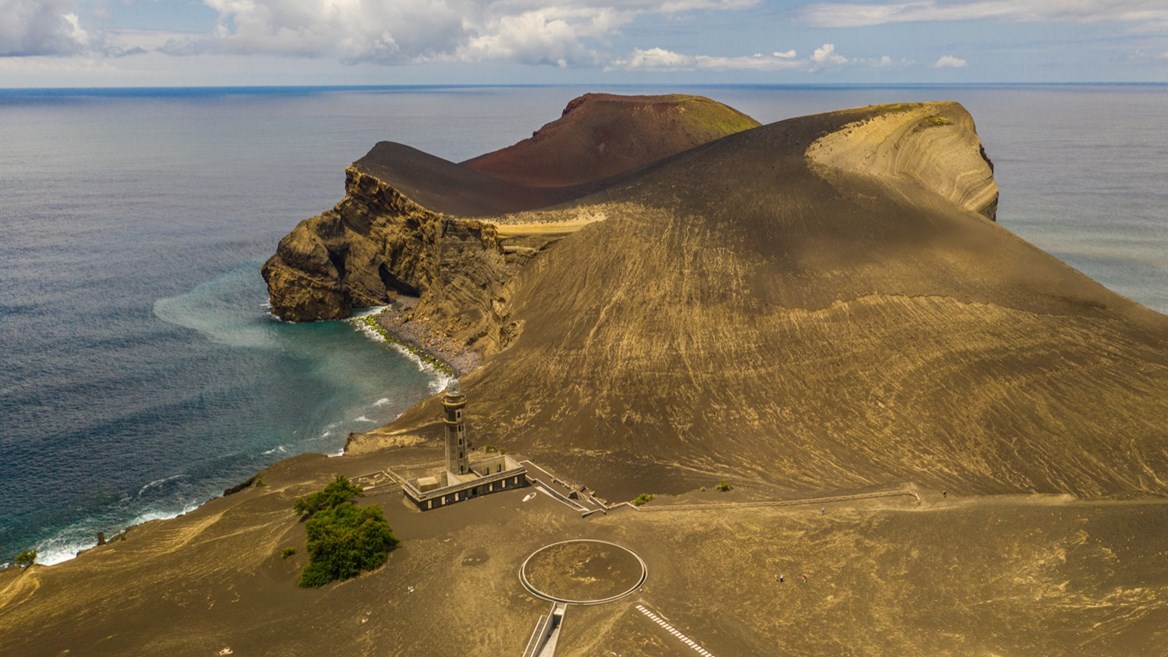Nine natural paradises in the Azores
The Azores archipelago is 1,400km west of Lisbon and 800km from Madeira. There are nine volcanic islands, each with its own unique character. Fly to Ponta Delgada on São Miguel Island – from 20,000 Avios each way – and discover a cluster of natural paradises in the middle of the Atlantic.

São Miguel Island is the largest of all, and the islet of Vila Franca do Campo, to the south, is one of the most attractive and visited natural sites in the archipelago. Its bay has a circular shape as a result of sea erosion on the cone of an underwater volcano from 4,000 years ago. The natural seawater pool that forms in the centre is perfect for swimming / Image by Enrico Pescantini: Adobe Stock

Another of the most attractive points of São Miguel Island is the Sete Cidades volcano. It has a large green- and turquoise-tinged lake alongside other smaller volcanoes with their own lagoons. One of the best ways to explore the area is by taking a hiking route. The most scenic one starts at the Vista do Rei viewpoint and ends at the village of Sete Cidades. It normally takes a couple of hours / Image by Kushch Dmitry: Adobe Stock

Along with Sete Cidades, Lagoa do Fogo is probably the island’s most-visited crater lake. It belongs to the Água de Pau Massif and all its viewpoints are spread along the road, although the Pico de Barrosa or the Pico da Vela mountains offer the best views thanks their height / Image by Raphael: Adobe Stock

Because of the volcanic origin of the archipelago, there is a surprising list of natural thermal baths that are perfect for relaxing. On the northern slope of Lagoa de Fogo, Caldeira Velha has a couple of 37º pools set in a tropical laurel forest landscape / Image by Cyrille: Adobe Stock

Flores Island is 12.5km wide and 17km long and has lakes, laurel forests, natural pools, viewpoints and beaches – and a unique array of waterfalls. Although the highest one is the Poço da Ribeira do Ferreiro, most can be found between Fajazinha and Ponta da Fajã. Outside Fajã, Cascata do Poço do Bacalhau cascades an imposing 90m / Image by javarman: Adobe Stock

The interior of the Caldeira de Guilherme Moniz in the heart of Terceira Island is the island’s largest crater and is home to treasures such as Algar do Carvão, an old volcanic pipe (antigo algar in Portuguese) made of a cone that’s more than 90m high. From the inside, you can see stalactites and stalagmites and the impressive route taken by the river of lava that erupted from Pico Alto and created this natural monument / Image by Liliana: Adobe Stock

Pico Island is an actual mountain. Its best viewpoint is in Ponta de Pico. At 2,351m above sea level, it is the highest point in the Azores and in all of Portugal. To climb it, you’ll need to sign up for an excursion or with a specialist guide and be in good physical condition. It offers a perfect panoramic view of the most central Azores Islands / Image by Francesco Bonino: Adobe Stock

The first island discovered by the Portuguese and the first to be created, Santa Maria boasts some of the finest beaches in the archipelago. São Lourenço Bay is the result of opening a crater that had been covered by the sea and is a very well recognised landscape due to its amphitheatre-shaped hillsides covered by vineyards / Image by Klara Bakalarova: Adobe Stock

Lovely Faial Island is home to the Capelinhos volcano, which was active between 1957 and 1958, the same year the Punta de Capelinhos lighthouse ceased to operate. In 2008, it was converted into an Interpretation Centre. Its construction dates back to 1903. / Image by Pedro: Adobe Stock
São Miguel Island is the largest of all, and the islet of Vila Franca do Campo, to the south, is one of the most attractive and visited natural sites in the archipelago. Its bay has a circular shape as a result of sea erosion on the cone of an underwater volcano from 4,000 years ago. The natural seawater pool that forms in the centre is perfect for swimming / Image by Enrico Pescantini: Adobe Stock











